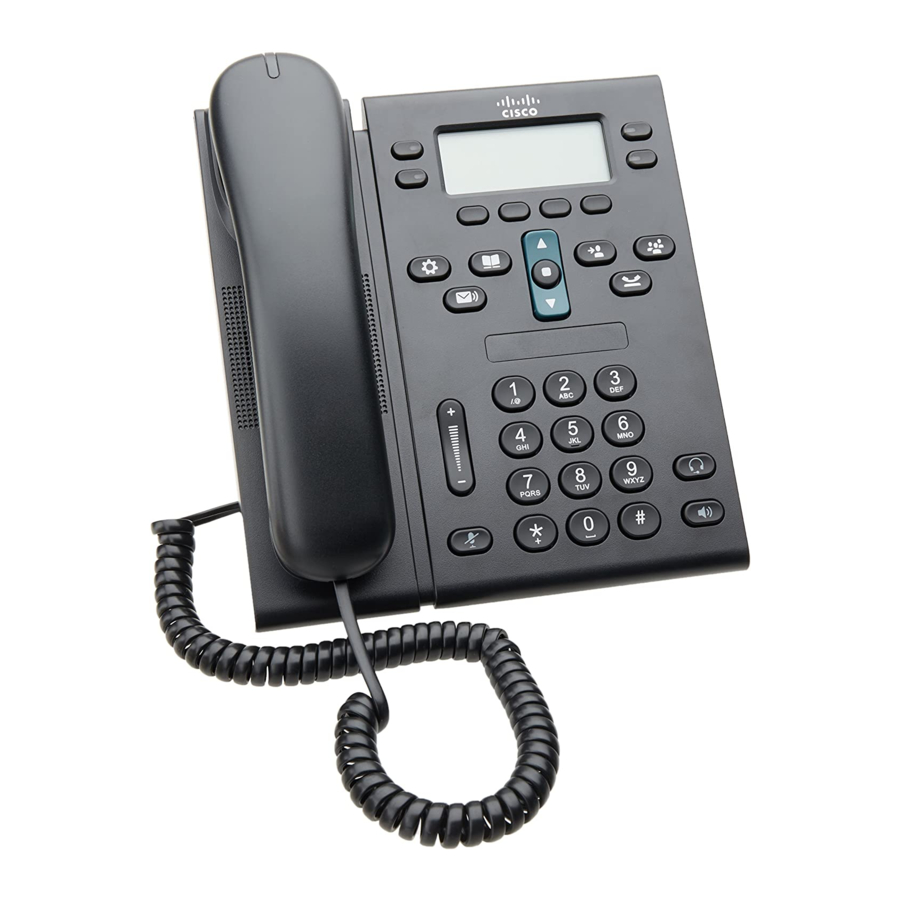Chapter
•
•
You can resolve these issues by isolating the voice traffic onto a separate VLAN. The switch port that
the phone is connected to would be configured to have separate VLANs for carrying:
•
•
Isolating the phones on a separate, auxiliary VLAN increases the quality of the voice traffic and allows
a large number of phones to be added to an existing network where there are not enough IP addresses
for each phone.
For more information, refer to the documentation included with a Cisco switch. You can also access
switch information at this URL:
http://cisco.com/en/US/products/hw/switches/index.html
Related Topics
•
•
Understanding How the Cisco Unified IP Phone Interacts with Cisco Unified
Communications Manager Express
The Cisco Unified Communications Manager Express (Unified CME) Version Negotiation feature
supports a SIS version in the supported tag. The Cisco Unified IP Phones use the supported tag to interact
with Cisco Unified Communications Manager Express and its supported SIS version.
The Cisco Unified IP phones do not support the following softkeys in CME mode:
•
•
•
•
•
•
•
The following behaviors are implemented by the Cisco Unified IP phones:
•
•
•
•
Cisco Unified IP Phone 6921, 6941, 6945, and 6961 Administration Guide for Cisco Unified Communications Manager 8.6 (SCCP and SIP)
OL-24567-01
Data traffic present on the VLAN supporting phones might reduce the quality of Voice-over-IP
traffic.
Network security may indicate a need to isolate the VLAN voice traffic from the VLAN data traffic.
Voice traffic to and from the IP phone (auxiliary VLAN on the Cisco Catalyst 6000 series, for
example)
Data traffic to and from the PC connected to the switch through the access port of the IP phone
(native VLAN)
Understanding the Phone Startup Process, page 2-7
Network Setup Menu, page 4-4
Transfer—Removed from the call agent softkey set, but the softkey is locally controlled by the
phone, and only displayed in the connected transfer call scenario.
Conference—Removed from the call agent softkey set, but the softkey is locally controlled by the
phone, and only displayed in the connected conference call scenario.
Join—Supported using the Conference hard key.
Hold—Supported using the Hold hard key.
Barge—Not supported.
DirectTransfer—Not supported.
Select—Not supported.
The phone firmware invokes the local version of the Conference (local mixing) feature, when
conference feature is invoked.
The phone firmware disables the CfwdALL softkey.
The phone firmware disables the Swap softkey.
Prevents the user from creating the Conference and Transfer calls across different lines.
Understanding Interactions with Other Cisco Unified IP Telephony Products
2-3

